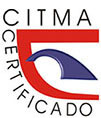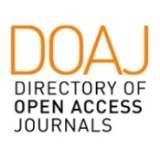«Vamos sazonando poco a poco» ‘Go’-constructions in Spanish spoken in Cuba and Mexico
Keywords:
motion verbs, verbal periphrases, grammaticalization, Mexican Spanish, Cuban SpanishAbstract
Introduction: Cooking videos and video blogs are a popular format of broad divulgation. From a linguistic point of view, they constitute a highly instructive type of discourse characterized by particular linguistic structures. In this context, some periphrastic constructions based on the motion verb ir ‘go’ (ir a + INF, ir + gerund and the periphrastic chain ir a + ir + gerund), whose semantic-functional analysis is the focus of this article, are of particular interest.
Methods: After summarizing the semantic values of the go-constructions, a brief summary of the works devoted to its use in Spanish spoken in Cuba and Mexico will be given. The empirical part consists of the quantitative and qualitative analysis of a microcorpus, orthographically transcribed, of approximately 130 minutes of culinary discourses from Cuban and Mexican cooking programs.
Results: The study shows that the use of the constructions in the analyzed context, in general terms, corresponds to the well-known functions. However, it must be noted that the semantic values of ir a + INF, ir + ger. and their combinations are not limited to the aspectual and temporal use. Rather, what dominates the central part of the discourse is a pragmatic-textual value.
Conclusions: Beyond the detailed analysis, the discussion of the topic reveals that the description of grammatical phenomena is still strongly influenced by well-established categories and Eurocentric views that are seldom questioned.
Downloads
References
APONTE ALEQUÍN, H. Y ORTIZ LÓPEZ, L. (2010). Una perspectiva pragmática del presente progresivo con valor de futuro en el español del Caribe. Selected Proceedings of the 12th Hispanistic Linguistic Symposium. Borgonovo, C., Español-Echevarría, M. y Prévost, Ph. (eds.) Sommerville: Cascadilla Proceedings Project, 109-122.
BLOMMAERT, J. Y BACKUS, A. (2013). Superdiverse Repertoires and the Individual. Multilingualism and Multimodality. Current Challanges for Educational Studies. Ingrid de Saint-Georges and Jean-Jacques Weber (eds.) Rotterdam/Boston/Taipei: Sense Publishers, 11-32.
BOURDIN, PH. (2008). On the grammaticalization of ‘come’ and ‘go’ into markers of textual connectivity. Rethinking Grammaticalization. New perspectives. López-Couso M. J. y Seoane, E. (eds.) Amsterdam/Philadelphia: John Benjamins, 37-59.
BRAVO, A. (2011.) La perífrasis de inminencia en español: del aspecto a la modalidad. Estudios sobre perífrasis y aspecto. Cuartero Otal, J., García Fernández, L. y Sinner, C. (eds.) München: peniope, 72-98.
BRAVO, A. (2014). The Spanish auxiliary ir ‘to go’: from resultative motion verb to focus marker. COME and GO off the Beaten Grammaticalization Path. Devos, M. y van der Wal, Je. (eds.) Berlin/Boston: DeGruyter, 187-218.
BYBEE, J. L. Y DAHL, Ö. (1989). The creation of tense and aspect systems in the languages of the world. Studies in Language 13-1, 51-131.
CARTAGENA, N. (1995-1996). La inestabilidad del paradigma verbal de futuro, ¿hispanoamericanismo, hispanismo, romanismo o universal lingüístico? BFUCh XXXV, 79-100.
CORTINA, Y.A. (2021). Perífrasis verbales vs. Redacción periodística. Verbal Periphrasis vs. Journalistic Writing. Islas 63 (200), 122-129.
CUARTERO OTAL, J.,GARCÍA FERNÁNDEZ, L. Y SINNER, C. (2011). Estudios sobre perífrasis y aspecto. München: peniope.
DAMOURETTE, J. Y PICHON, É. (1911-1936). Des mots à la pensée: Essai de grammaire de la langue française. Paris: d’Atrey.
DETGES, U. (1999). Wie entsteht Grammatik? Kognitive und pragmatische Determinanten der Grammatikalisierung von Tempusmarkern. Reanalyse und Grammatikalisierung in den romanischen Sprachen. Lang, J. y Neumann-Holzschuh, I. (eds.) Tübingen: Niemeyer, 51-52.
DETGES, U. (2000). Two types of restructuring in French creoles: A cognitive approach to the genesis of tense markers. Degrees of Restructuring in Creole Languages. Neumann-Holzschuh, I. y Schneider, E. (eds.) Amsterdam/Philadelphia: John Benjamins, 135-162.
FETZER, A. (2012). Textual coherence as a pragmatic phenomenon. The Cambridge Handbook of Pragmatics. Allan, K. y Jaszczolt, K.M. (eds.) Cambridge: Cambridge University Press, 447-468.
GARACHANA, M. (2018). From Movement to Grammar: Spanish Verbal Periphrases Derived from Verbs of Movement. Syntaxe & Sémantique 19, 115-146.
GARACHANA, M. (2020). Las perífrasis verbales, hoy. La evolución de las perífrasis verbales en español. Una aproximación desde la gramática de construcciones diacrónica y la gramaticalización. Garachana, M. (ed.) Berlin et al.: Peter Lang, 11-43.
GRACÍA FERNÁNDEZ, L. (2006). Diccionario de perífrasis verbales. Madrid: Gredos.
GÓMEZ TORREGO, L. (1988). Perífrasis verbales. Sintaxis, semántica y estilística. Madrid: Arco.
GÜLDEMANN, T. (2003). Present progressive vis-à-vis predication focus in Bantu. A verbal category between semantics and pragmatics. Studies in Language 27,2, 323-360.
KLEIN, W. Y VON STUTTERHEIM, CH. (1992). Textstruktur und referentielle Bewegung. Zeitschrift für Literaturwissenschaft und Linguistik 86, 67-92.
LANGACKER, R. (2001). The English present tense. English Language and Linguistics 5.2, 251-272.
LARREYA, P. (2001). Modal verbs and the Expression of Futurity in English, French and Italian. Belgian Journal of Linguistics 14, 115-129.
LARREYA, P. (2005). Sur les emplois de la périphrase aller + infinitif. Les périphrases verbales. Shyldkrot, H./ Le Querler, N. (eds.) Amsterdam/Philadelphia: John Benjamins, 337-360.
LASTRA, Y. Y MARTÍN BUTRAGUEÑO, P. (2008). Futuro perifrástico y future morfológico en el corpus sociolingüístico de la ciudad de México. XV Congreso Internacional de la ALFAL, Sección de Sociolingüística, 1-26.https://www.9h05.com/wa_files/FUTUROS_20EN_20EL_20CORPUS_20MEXICO.pdf
LOPE BLANCH, J.M. (1968). La reducción del paradigma verbal en el español de México. Revista de filología española 86,4, 1791-1808.
LOPE BLANCH, J.M. (1983). Estudios sobre el español de México. México, UNAM.
MORENO DE ALBA, J.G. (1970). Vitalidad del futuro de indicativo en la norma culta del español hablado en México. Anuario de Letras VIII, 81-102.
MORENO DE ALBA, J.G. (2004). El español en América. México. Fondo de Cultura Económica.
OLBERTZ, H. (1998): Verbal Periphrases in a Functional Grammar of Spanish. Berlin: Mouton de Gruyter.
PAUFLER, H.-D. (1977). Lateinamerikanisches Spanisch. Phonetisch-phonologische und morphologisch-syntaktische Fragen. Leipzig: Verlag Enzyklopädie.
PABELLO DE MICKEY, V. (1990). Dialectología del habla de la Ciudad de México. La Palabra y el Hombre 74, 109-125.
PUSCH, C. D. y Wesch, A. (2003). Verbalperiphrasen zwischen Grammatik, Lexikon und Pragmatik. Verbalperiphrasen in den (ibero-)romanischen Sprachen/ Períphrasis verbals en les llengües (ibero-)romàniques/Perífrasis verbales en las lenguas (ibero-)románicas. PUSCH, C. D./Wesch, A. (eds.) Hamburg: Buske, 1-10.
QUESADA, J. D. (1994). Periphrastische Aktionsart im Spanischen: Das Verhalten einer Kategorie der Übergangszone. Bern: Peter Lang.
ROSENBLATT, A. (1946). Notas de morfología dialectal. BDH 2, 103-316.
SMITH, C. (1991). The Parameter of Aspect. Dordrecht/Boston/London: Kluwer.
SQUARTINI, M. (1998). Verbal Periphrases in Romance. Aspect, Actionality, and Grammaticalization. Berlin/New York: Mouton de Gruyter.
STEFANOWITSCH, A. (1999). The go-and-verb construction in a crosslinguistic perspective: image-schema blending and the construal of events. Proceedings of the Second Annual High Desert Linguistics Society Conference. Nordquist, D. y Berkenfield, C. (eds.) Albuquerque, NM: High Desert Linguistics Society,123-134.
STOLOVA, N. I. (2009). Classification of the Romance Languages. Evolution of Motion-Based Periphrases as a New Criterion. Romance Quarterly 56,2, 82-90.
STONE, G. (1984). Las perífrasis verbales de gerundio en el habla culta de la Habana. Anuario de Letras. Lingüística y Filología 22, 195-207.
Downloads
Published
How to Cite
Issue
Section
License
Copyright (c) 2023 Katrin Pfadenhauer

This work is licensed under a Creative Commons Attribution-NonCommercial 4.0 International License.
Usted es libre de:
Compartir — copiar y redistribuir el material en cualquier medio o formato
Adaptar — remezclar, transformar y construir a partir del material
La licenciante no puede revocar estas libertades en tanto usted siga los términos de la licencia
Bajo los siguientes términos:
Usted es libre de:
Atribución — Usted debe dar crédito de manera adecuada, brindar un enlace a la licencia, e indicar si se han realizado cambios. Puede hacerlo en cualquier forma razonable, pero no de forma tal que sugiera que usted o su uso tienen el apoyo de la licenciante.
NoComercial — Usted no puede hacer uso del material con propósitos comerciales.
No hay restricciones adicionales — No puede aplicar términos legales ni medidas tecnológicas que restrinjan legalmente a otras a hacer cualquier uso permitido por la licencia.


















